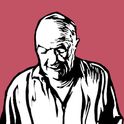Museum directors sometimes find there are artworks in their collections that pull them in like magnets, that they can’t walk past without stopping. When Karin Hindsbo was the director of the National Museum in Oslo, from 2017 to 2023, that was often a display with porcelain vases—swannish necks, cobalt blue paint—from the Chinese Ming dynasty. Since Hindsbo took up her post as director of Tate Modern in September last year, it has often been Cildo Meireles’s 2001 installation Babel, a tower of whispering radios which dominates a dusky room on the fourth floor. “You can just go up there and think of the world we live in,” Hindsbo says. The installation makes her contemplate communication, noise, the media, overachieving, striving, failing.
Noise is part of the job when you run one of the world’s most influential galleries. Last year the Tate had 1,343 workers, 76,657 artworks, six million visitors, four museums (Tate Modern, Britain, Liverpool, St Ives) and £1.7bn of total assets.
On a February afternoon, I walk with Hindsbo—who is 49, Danish and wearing a grey blazer with white trainers—through the museum’s new exhibition on artist and activist Yoko Ono. It’s the final day of prep. Museum workers whirl in each room, painting, cutting, sticking, hammering, tidying, sweeping—performing the thousands of little tasks that add up to a major exhibition. Two men are affixing large stickers to the floor for guests to step on. One has a method: sit on the sticker then jimmy it with his backside.
“I’m just making sure this is stuck down,” he says.
“This is how we work here!” Hindsbo says.
The exhibition begins with Ono striking a match in ultra-slow motion. “It’s an amazing thing about Yoko, these extremely simple gestures that just transform into something else,” Hindsbo says. Soon we come across black bags for the 1964 Bag Piece. Ono invites people to climb into sacks and—well, do whatever. Hindsbo is yet to try so we give it a spin. Removing our shoes, we don’t so much get into the black sacks as become them.
“You can actually see through it,” Hindsbo says, lifting her arms up. By now a small crowd has stopped to watch. “I feel great!” she says.
We shed the bags and walk onwards—to Add Color (Refugee Boat), a spotless white room with a skiff which the public are invited to cover with blue pens. Once again, the audience is a joint producer of the art. (My mind gets dizzy thinking of all the TikToks to come.)
At places like the Tate Modern, the details matter. In the recent Philip Guston retrospective, the artist’s later works exploring racism were hung a few inches lower than the rest, to evoke a more guttural feel. Here, the wall behind a video of performance artwork Cut Piece is painted dark to suck people in.
The show was announced last June. Since then—as Gaza is reduced to rubble—it’s become increasingly relevant to stage an exhibition by such a prominent peace activist. When I ask Hindsbo about this, she steers clear of specifics, but says “Obviously there’s so much in this show that speaks to the time we’re in.”
Next year Tate Modern will celebrate its silver jubilee. It will do so after more than a decade of arts funding cuts. “It’s tough times in most art institutions in the UK,” Hindsbo says. “It’s going to be challenging for the next couple of years, no doubt about it, but we’re trying to work productively.”
Hindsbo’s philosophy as director, like Ono’s artworks, is to collaborate. “We are a team, so it will always be a Tate show,” she says. “I hope there’s not going to be a ‘Hindsbo period’, then I’ll say I’ve failed.”
Olive trees are the final stop. Hindsbo and I are the first to write messages for Ono’s Wish Tree. I affix a note wishing the children of Gaza can go back to being children again. Hindsbo ties her note, wishing for people “to see the blue sky, to encounter art”.













